So you want to make a great cup of coffee?
Fortunately for you and me, coffee isn’t a dark art. You’ll make the perfect cup every time if you understand a few basic principles and can manage quick back-of-napkin math.
My quick advice: If you’re brewing drip coffee (like Mr. Coffee), use 2 tablespoons of ground coffee beans for every 6 ounces of drink you’d like to produce.
In the article below, you’ll find a more thorough cheat sheet for how much ground coffee to use depending on how much coffee you want to make. In addition to drip coffee, we’ll also cover french press, espresso, cold brew, and Aeropress.
I’ll also explain the most precise way to measure your coffee grinds, the appropriate water ratio, and get the best cup of coffee every time that will taste like it does at your local coffee shop!
The Perfect Coffee per Cup Ratio
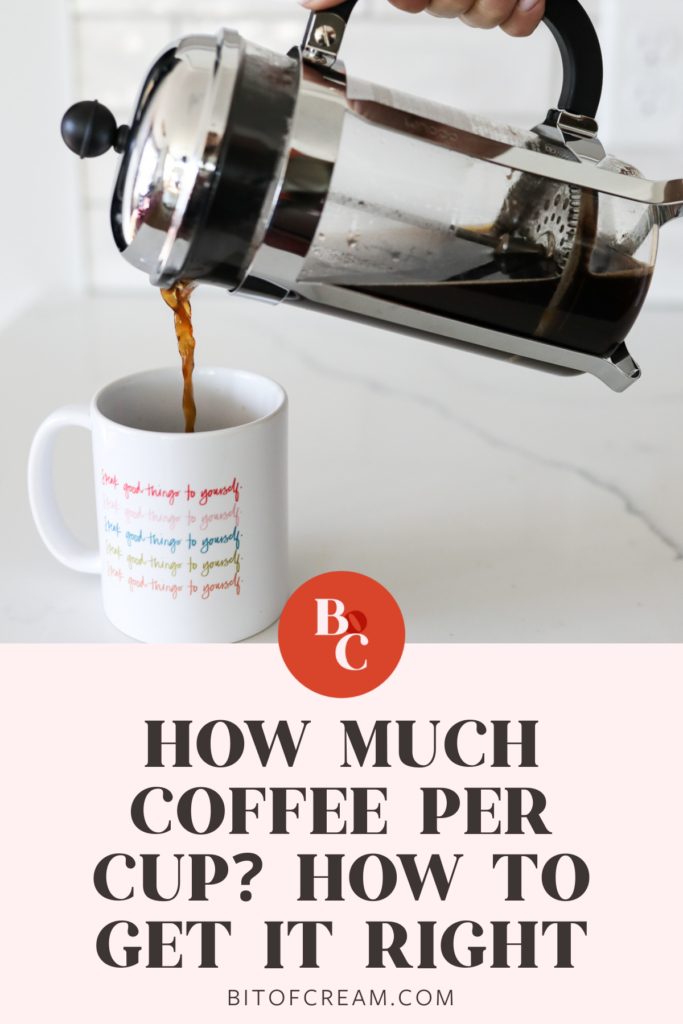
What is the perfect ratio for a cup of coffee? If you’re brewing with a classic drip coffee pot, try using a 1:16 ratio of coffee to water by weight.
This ratio seems simple, but it’s not exactly intuitive. I’ll explain why below.
But first, here’s your Mr. Coffee cheat sheet:
| Serving Size | Coffee Weight | Tablespoons | Scoops | Drink Volume |
| 1 Cups | 9.2 grams | 2 Tbsp | 1 Scoop | 5 fluid ounces |
| 2 Cups | 18.4 grams | 4 Tbsp | 2 Scoop | 10 fluid ounces |
| 3 Cups | 27.6 grams | 6 Tbsp | 3 Scoop | 15 fluid ounces |
| 4 Cups | 36.8 grams | 8 Tbsp | 4 Scoop | 20 fluid ounces |
| 5 Cups | 46.0 grams | 10 Tbsp | 5 Scoop | 25 fluid ounces |
| 6 Cups | 54.2 grams | 12 Tbsp | 6 Scoop | 30 fluid ounces |
| 7 Cups | 63.4 grams | 14 Tbsp | 7 Scoop | 35 fluid ounces |
| 8 Cups | 73.6 grams | 16 Tbsp | 8 Scoop | 40 fluid ounces |
| 10 Cups | 92.0 grams | 20 Tbsp | 10 Scoop | 50 fluid ounces |
| 12 Cups | 108.4 grams | 24 Tbsp | 12 Scoop | 60 fluid ounces |
Drip Coffee
The good news is that when you go to make drip coffee it isn’t that complicated of a process if you’re going by the book.
Making one cup and not sure how much you should use? Just use one scoop of coffee.
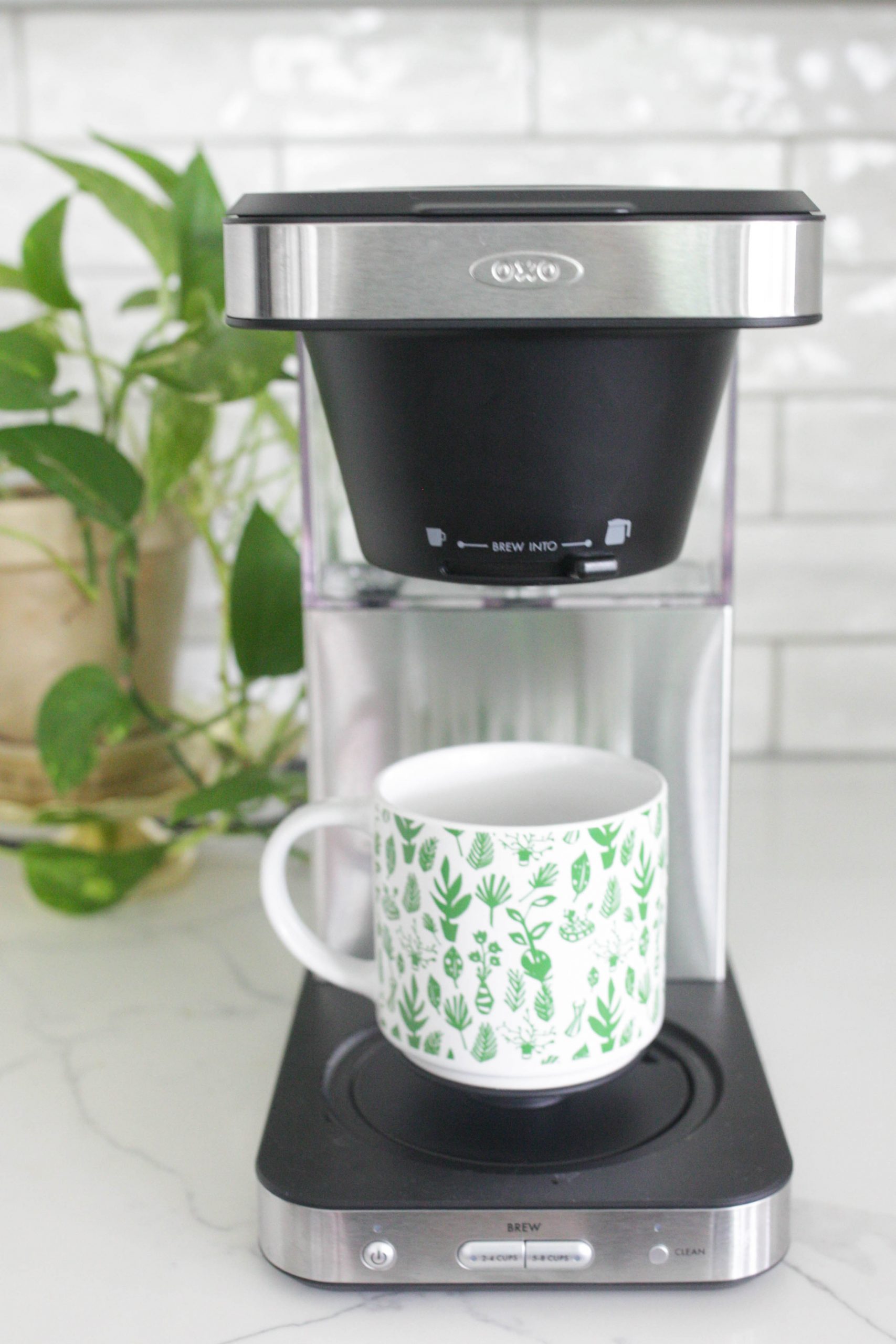
If you’re using the manufacturer’s scoop, and the markings on the side of the carafe, then it’s virtually foolproof. For one cup, one scoop in, one cup out. Viola! Caffeine!
But, you’ve lost your scoop, or the graduations on the side of your carafe have faded away things aren’t so simple. There are two main reasons why:
- The “perfect ratio” is actually based on weight, not volume.
- Mr. Coffee uses non-standard measurements.
These issues probably aren’t a big deal for most people. But if you’re new to making coffee and looking to make a truly great cup of coffee every time – it helps to know the science behind your cup.
Scoops of Ground Coffee
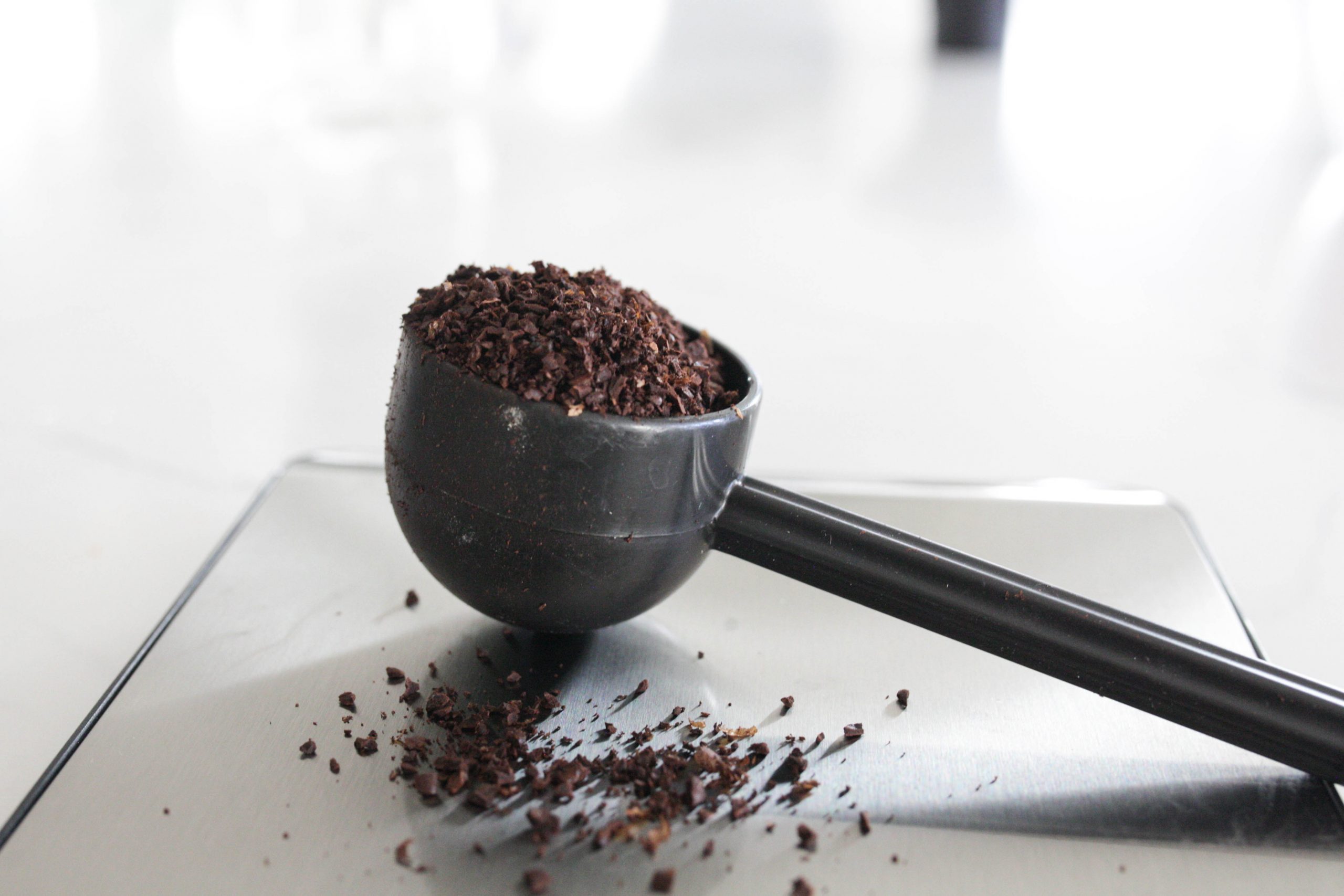
Most people use “scoops” to make their coffee, but what exactly is a scoop and how much do you need for a normal cup of joe? And what happens if you lose it? Scoops are one of the non-standard measurements used by a Mr. Coffee.
Fortunately for us, a scoop is simply 2 tablespoons. This knowledge may come in handy in case you misplace yours!
1 Scoop = 2 Tablespoons.
Cups
Another non-standard measurement used by Mr. Coffee, and most drip or dual coffee makers are “cups.” This may seem counterintuitive, but I’ll explain.
When you see the “cup” graduations on the side of a drip coffee carafe, it doesn’t mean a standard 8-ounce US Cup.
For Mr. Coffee, a “cup” is defined as 5 ounces.
It makes sense why the designers picked this non-standard measurement. It simplifies things for most people. One “scoop” in, makes one “cup” out in the coffee pot.
However, if you’re a perfectionist like me, it doesn’t make achieving the perfect coffee ratio any easier!
Weight vs. Volume
The perfect ratio (1:16) for drip coffee per cup is based on weight, not volume.
You might assume that a scoop of coffee always weighs the same, but that’s not actually the case. Coffee can be heavier or lighter depending on how it is roasted or ground.
As a rule of thumb, Mr. Coffee assumes a scoop of ground coffee weighs about 10 grams. Sometimes this is true, but not always.
I weighed a scoop of very dark coffee on a digital scale at 10.1 grams. Then I weighed a tablespoon of a light roast which came in at 13.6 grams.
As coffee roasts, it expands and becomes less dense. A darker roast weighs less by volume. So, as in the example above, you could use the same number of scoops and end up with 30% less ground coffee.
Brewing Practice
Brewing the “perfect cup” is highly subjective, so you’ll need to find what works best for you. Measuring your coffee by weight and using the 1:16 ratio is a great place to start to get that perfect pot of coffee.
It may sound complicated or costly, but digital scales are incredibly affordable, and collecting measurements takes only seconds. It’s really that fast and it helps you make the best coffee and avoid it turning out weak.
Once you’ve got the basics down, try modifying the ratio for more or less coffee by weight. See what happens, and learn what you prefer. It’s part of the fun of being an enthusiast! Getting things just right.
Other Brew Methods
French Press
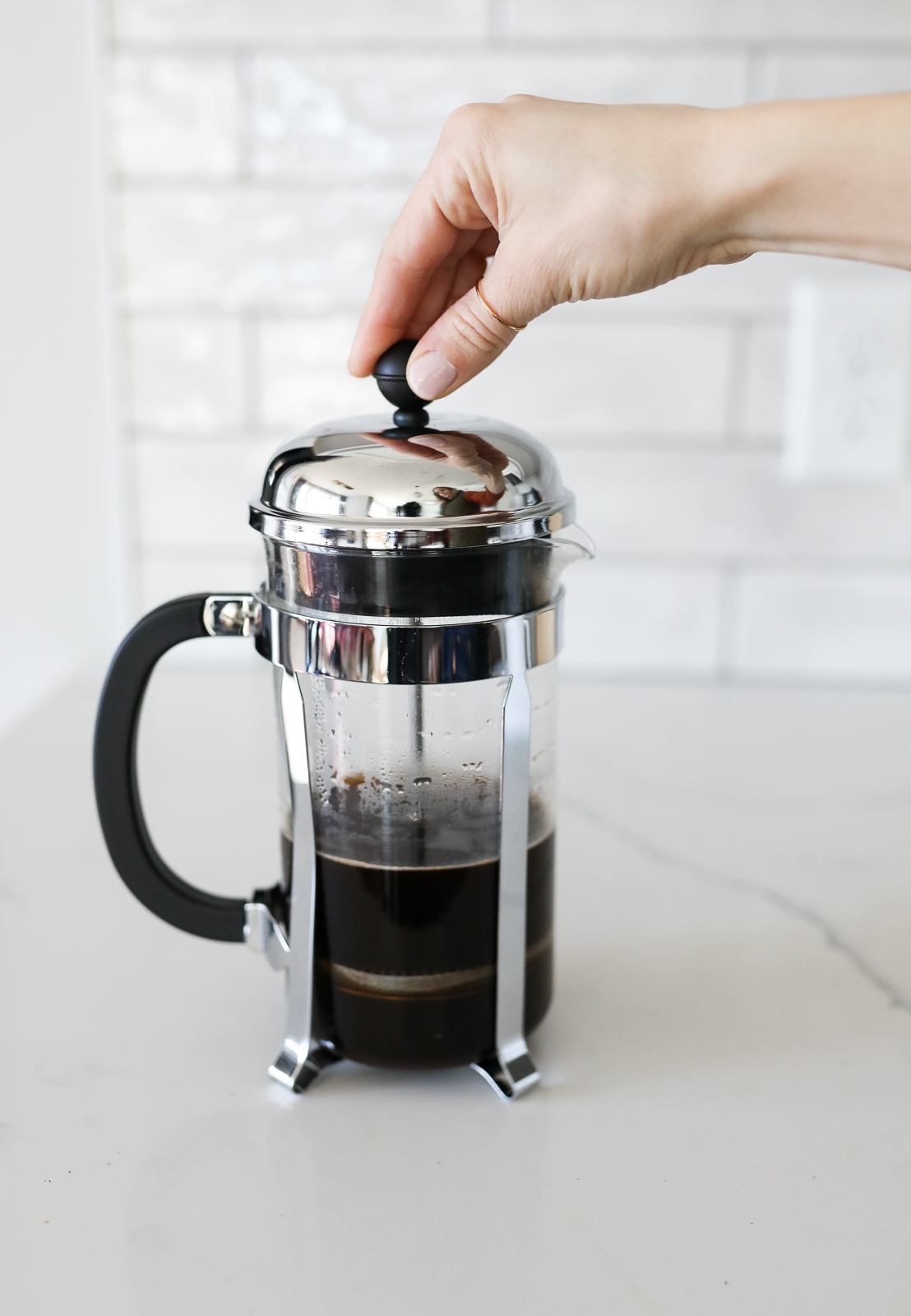
A French Press typically prepares 3-4 unique 8-ounce cups in a single carafe. It’s an awesome social brewing method and aesthetically pleasing addition to any morning routine.
Steep your coffee grounds on the table, plunge, and pass it around so guests can self-serve.
A French press uses a 1:12 ratio of coffee-to-water (by weight), and produces coffee with a full body and robust flavor. There’s usually plenty to share with a small crowd.
Although they come in different sizes, 32 fluid ounces is probably the most popular. For a full 32-ounce carafe, add 75 grams of coffee grounds and 907 ml of water.
If measuring by volume, try adding 1 tablespoon of coffee grounds for every 200 ml of water.
The caffeine extraction in French Press is potent. As a rule of thumb, every 8-ounce cup of french press coffee has about 110 mg of caffeine. This is about 40% more than an espresso shot.
Espresso
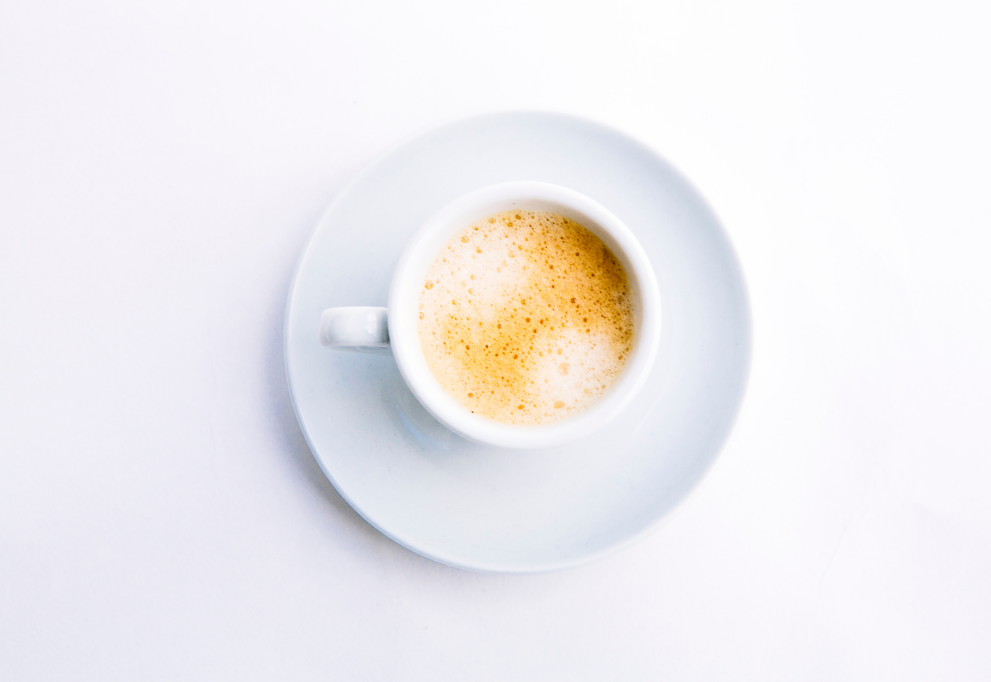
If you’re new to making coffee and aren’t already measuring by weight, you probably shouldn’t be making espresso. This brewing method makes the purest coffee and is all about precision.
Espresso is served in a 1-ounce portion called a shot. Or in some cases a 2-ounce double shot, also referred to as an espresso doppio.
It’s broadly agreed upon in the coffee community that espresso should have a 1:2 ratio of ground coffee at best to the resulting drink. There are variations though. It is also imperative to buy coffee beans that are high quality to get a quality shot of espresso.
With a “ristretto,” the extraction period is restricted and less water is involved. The result is a shorter short with a more intense 1:1 dose ratio.
By contrast, a “lungo” takes a longer extraction period. The resulting flavor is less intense, and the dose ratio is diluted to 1:3.
For standard 1:2 espresso, add 9 grams of finely ground coffee to your portafilter to make an 18-gram drink. About 1 ounce in volume.
As for caffeine density, there is some variability, but a good rule of thumb is that a single shot includes 75 mg.
Cold Brew
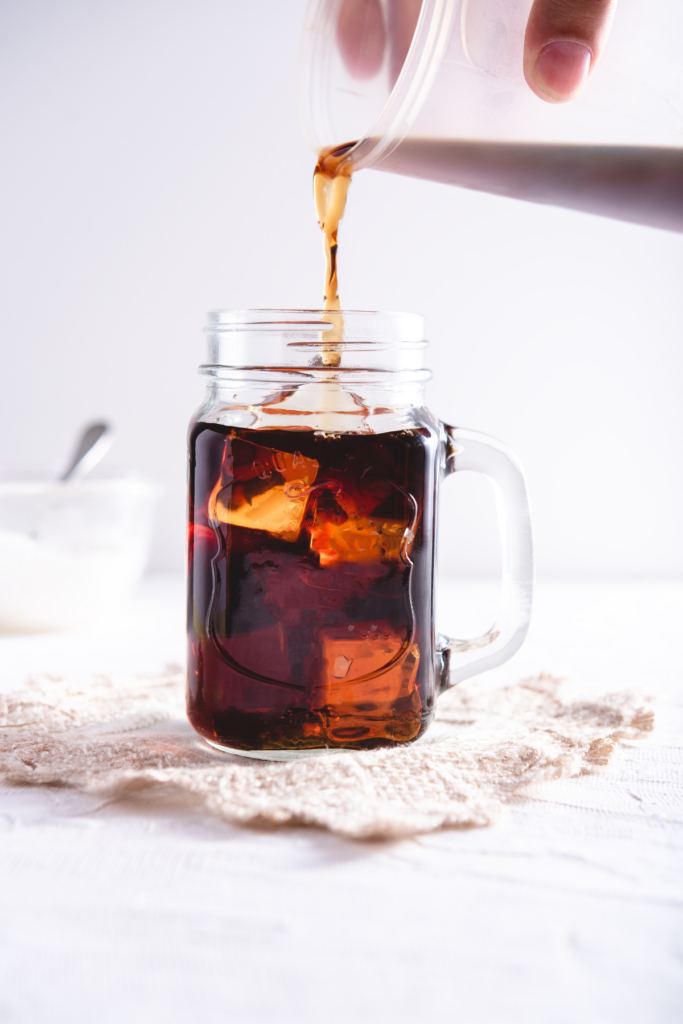
Cold brew is a fairly new drink in the coffee world that’s typically prepared in bulk through an extended cold-water extraction process that can last hours. Generally, it’s best served chilled and served to order in 8-ounce portions.
You can use any liquid-containing vessels to prepare cold brew, but I’d recommend a large french press. The process, while using one, is similar to brewing tea.
Most cold brew coffees are made using a ratio between 1:4 and 1:8, depending on how much coffee you want and how strong you want it. A standard 8-ounce cold brew contains about 100 mg of caffeine. Nitro cold brew has even more.
Aeropress
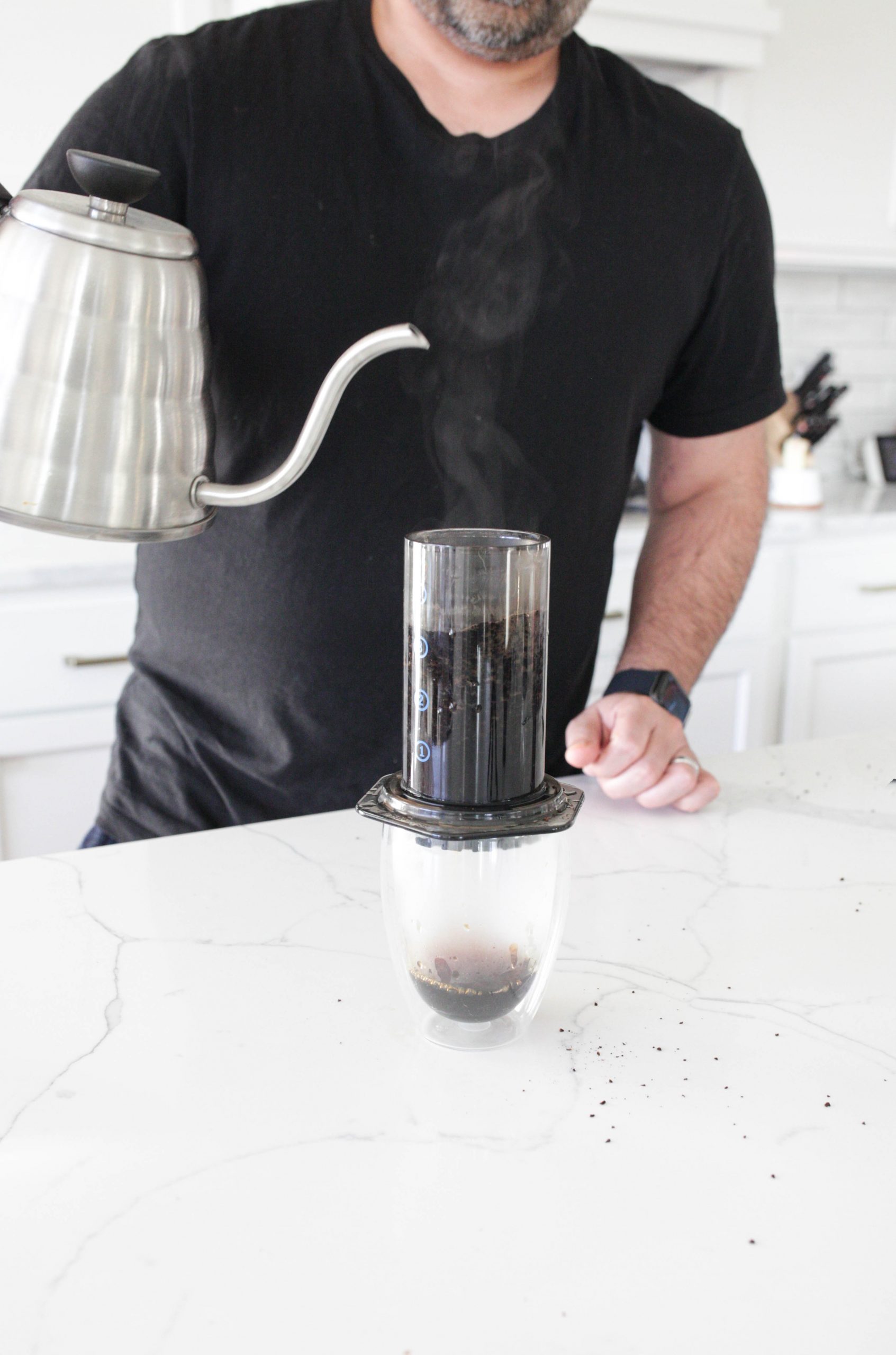
An Aeropress yields an 8-ounce cup of “espresso-like” coffee with every brewing cycle. It’s also possible to make a half-portion.
Us your grinder and set it to “fine”, and during the brewing process, place the ground coffee in the cylinder and covered with near-boiling water. After 1-3 minutes of extraction, the plunger is forced down, pushing the fresh coffee into awaiting coffee cups.
The best dose ratio for Aeropress is the same as drip coffee, 1:16 coffee-to-water by weight.
Expect 50-70 mg of caffeine per cup.
Quick Comparison
Here’s a quick reference for how much coffee, serving size, and caffeine based on the preparation method.
| Brew Method | Dose Ratio | Serving Size (fl oz) | Caffeine (approx) |
| Drip Coffee | 1:16 | 8 fluid ounces | 90 mg |
| French Press | 1:12 | 8 fluid ounces | 110 mg |
| Espresso | 1:2 | 1 fluid ounce | 75 mg |
| Cold Brew | 1:4 | 8 fluid ounces | 100 mg |
| Aeropress | 1:16 | 8 fluid ounces | 50-70 mg |
You can adjust the dosing ratio depending how much coffee you want. Caffeine content is approximate. Several factors that impact exactly how much caffeine lands in your coffee cup.
FAQ
If you’re wondering how much coffee per cup is; the standard serving size for a cup of coffee is 8 fluid ounces. But beware, if you’re measuring your “cups” based on the graduations provided by a drip coffee carafe then your serving size may be different. Most drip coffee machines equate a “cup” to 5 ounces.
A general guideline when you go to brew your perfect cup of coffee is called the “Golden Ratio” – one to two tablespoons of coffee grounds for every six ounces of water. This can be adjusted to suit individual taste preferences. Check the cup lines or indicators on your specific brewer to see how they actually measure best.
How much coffee per cup do you use? Well, for a drip coffee, the Golden Ratio is 1:16 coffee-to-drink. In simple terms, this means for every 1 gram of coffee grounds you would put into the machine you should be able to brew 16 grams of drink into the coffee pot. The ratio is calculated by weight, and it’s important to note that all coffee does not weigh the same.
Using a digital scale when measuring coffee for your brew is best practice. Scales are inexpensive and easy to use (shop around on Amazon to find your favorite, like this one!). Incorporating a scale into your morning brew will only cost a few seconds. But it will help ensure that you get a consistent delicious result every time.
Looking for more coffee fun? Check out these posts!
